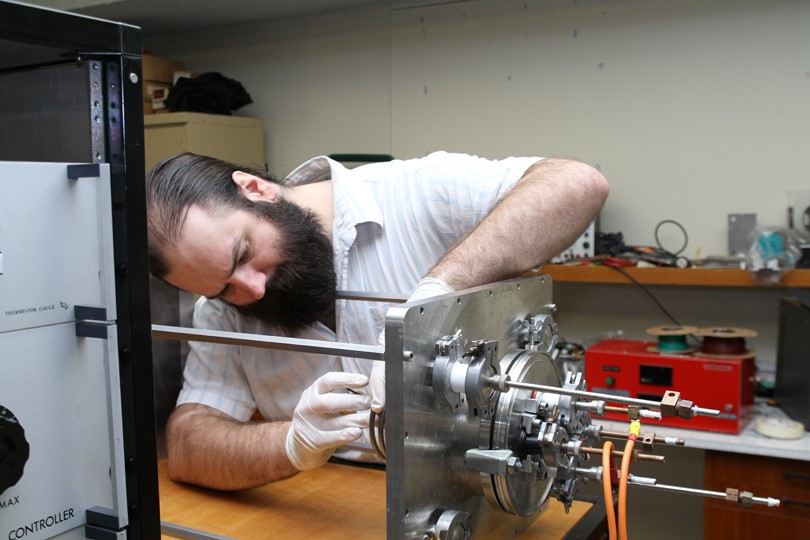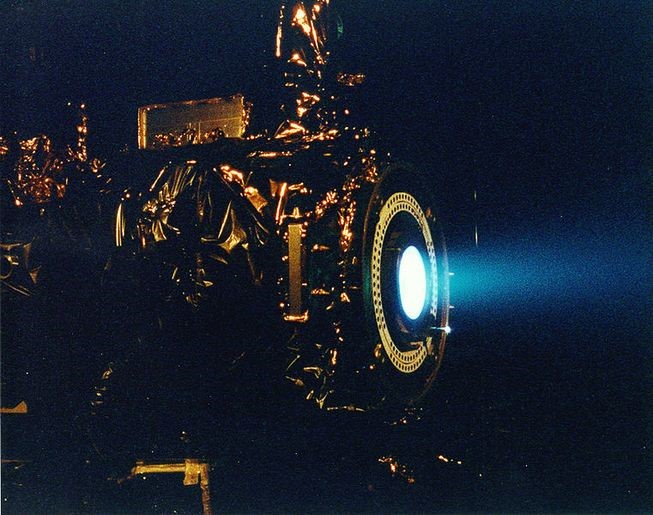
Meet Patrick “Paddy” Neumann, an Australia doctoral student at the University of Sydney who recently smashed NASA’s fuel efficiency record for space propulsion with a new invention: an ion space drive that rusn on a multitude of different metals and substances, including Vegemite and beer.
Paddy, who has been working on the project since his third undergraduate year in college, and is finally ready to publically spotlight the idea and revolutionize the how we view space travel after procuring all the necessary patents. The “Neumann Drive,” as it’s called, is 30% more efficient than the former record holder – NASA’s “HiPEP” system.
As you may recall, Ion drives create propulsion by hitting their fuel source with electric arcs and channeling the emitted ions through a magnetic nozzle. The resulting acceleration is highly efficient and perfect for maintaining the position of orbital space stations like the ISS, or hauling space cargo over long distances. This differs from the standard model of propulsion which burns tons of chemical fuel to achieve liftoff before burning more fuel to steadily coast through open space. The latter is far faster, but highly inefficient over long distances.
NASA’s own HiPEP ion system (high power electric propulsion) used to maintain the record for ion drive efficiency with its 9,600 (+/- 200) seconds of specific impulse, the amount of thrust produced per kilogram of fuel burnt. The Nuemann Drive not only raised the stakes to 14,690 (+/- 2,000), but operates using magnesium, vanadium, titanium, and bismuth as a fuel source, where HiPEP relies on xenon gas.
To put this into perspective, NASA explains that standard chemical rockets have a “specific impulse on the order of 300-400 seconds,” burning at around 35 % efficiency rate. By comparison, ion thrusters can achieve up to a 90 % efficiency rate.

NASA’s NSTAR ion thruster for the Deep Space 1 spacecraft
Bear in mind that ion drives are not powerful enough to launch spacecraft from earth (although they may be able to do so in zero gravity); the primary incentive in using an ion drive over a conventional combustion drive may lie in long distance mission such as reusable cargo missions. Paddy suggests that an ion system armed with magnesium fuel could get a pod to Mars and “bring it back empty in 4 to 5 years,” and when using molybdenum as fuel, a one-way trip to Mars could be accomplished in as little as 10 months.
Having since formed his own company called Neumann Space, Paddy explains that the next step of the project is engineering a working prototype that can run 24/7 for a few consecutive months to prove “that the system can deliver the momentum changes needed for space travel.”
“I’d put it at level 4 on NASA’s Tech Readiness Level scale,” he says, “in that we’ve proven that the system works in a lab, but we need to transition towards engineering prototypes, rather than research prototypes.”
As for whether the drive can run on Vegemite and beer, Neumann Space dictates that it may be possible to do so if the two substances are broken down to their constituent carbon, and that carbon is sintered into a fuel rod that can fit into trigger wires made from mostly-tungsten.
Source: Business Insider
Advertisement
Learn more about Electronic Products Magazine





